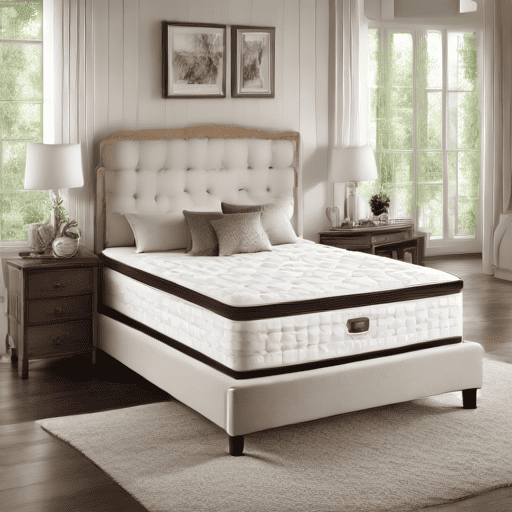Yes, vacuuming your mattress can help reduce the presence of dust mites. Dust mites are microscopic organisms that thrive in warm, humid environments and feed on dead skin cells. By vacuuming your mattress regularly, you can remove dust mites, their waste, and the skin cells they feed on, thereby reducing their population.
Additionally, using a vacuum cleaner with a HEPA filter can help capture and trap a higher percentage of dust mites and their allergens.
Understanding Dust Mites and Their Impact On Your Mattress
Dust mites are microscopic organisms that thrive in warm, humid environments and feed on shed human skin cells. These tiny pests can have a significant impact on the cleanliness and hygiene of your mattress. Their presence can contribute to various health issues, particularly for individuals with allergies or asthma.
Dust mite allergens can trigger allergic reactions, leading to symptoms such as sneezing, coughing, watery eyes, and respiratory discomfort. Therefore, comprehending the implications of dust mites is crucial for maintaining a healthy sleeping environment.
In addition to potential health concerns, dust mites can also affect the overall condition of your mattress. Their waste and shed skins can accumulate within the mattress, leading to the development of an unsanitary and allergen-rich environment. This can compromise the quality of your sleep and the longevity of your mattress.
To mitigate the impact of dust mites on your mattress, it’s essential to implement regular cleaning and maintenance practices. Vacuuming your mattress, washing bedding in hot water, and using allergen-proof mattress and pillow covers are effective strategies for reducing dust mite populations. Additionally, maintaining optimal indoor humidity levels and adequate ventilation can create an environment that is less conducive to dust mite proliferation.
By understanding the nature of dust mites and their potential effects on your mattress, you can take proactive measures to minimize their presence and create a healthier sleeping environment for yourself and your family.
Tips for Properly Vacuuming Your Mattress
Proper vacuuming techniques are essential for maximizing the efficacy of dust mite control. When vacuuming your mattress, it’s important to use a vacuum cleaner with sufficient suction power and a brush attachment to dislodge and remove debris effectively.
Focus on thorough coverage of the entire mattress surface, paying special attention to seams, crevices, and areas where dust mites are likely to accumulate.
Additionally, incorporating a regular vacuuming schedule and overlapping passes can ensure comprehensive cleaning. By adhering to these tips, you can optimize the impact of vacuuming in managing dust mites and maintaining a hygienic sleeping environment.
Additional Strategies for Managing Dust Mites
In addition to vacuuming, several supplementary strategies can further enhance dust mite management. Washing bedding, including sheets, pillowcases, and mattress protectors, in hot water can help eliminate dust mites and their allergens.
Using allergen-proof covers for mattresses, pillows, and duvets can create a barrier that prevents dust mites from infiltrating these surfaces.
Furthermore, reducing indoor humidity levels, enhancing ventilation, and minimizing clutter can create an environment that is less conducive to dust mite proliferation. By combining these additional measures with regular vacuuming, you can establish a comprehensive approach to managing dust mites in your home.

Choosing the Right Vacuum Cleaner for Dust Mite Control
Selecting an appropriate vacuum cleaner is pivotal for effective dust mite control. When choosing a vacuum cleaner for this purpose, prioritize models equipped with HEPA filters, as these filters are designed to capture a higher percentage of microscopic particles, including dust mites and their allergens.
Opt for a vacuum with strong suction power and specialized attachments that facilitate thorough cleaning of mattresses, upholstery, and other surfaces where dust mites may reside.
Additionally, consider the maneuverability, weight, and noise level of the vacuum to ensure user comfort and convenience. By selecting a vacuum cleaner tailored to dust mite control, you can enhance the efficiency of your cleaning efforts and contribute to a healthier indoor environment.
Maintaining a Clean and Healthy Sleeping Environment
Maintaining a clean and healthy sleeping environment is essential for managing dust mites and promoting overall well-being. In addition to regular vacuuming, incorporating a few key practices can contribute to a hygienic sleep space.
Washing bedding, including sheets, pillowcases, and mattress protectors, in hot water at regular intervals can help eliminate dust mites and their allergens.
Using allergen-proof covers for mattresses, pillows, and duvets can create a protective barrier against dust mites.
Additionally, ensuring optimal indoor humidity levels, adequate ventilation, and minimal clutter can create an environment that is less hospitable to dust mites. By integrating these practices into your routine, you can maintain a clean and healthy sleeping environment that supports restful sleep and overall wellness.
How To Avoid Dust Mites Summarized
- Wash bedding, including sheets, pillowcases, and mattress protectors, regularly in hot water (130°F or above) to kill dust mites and remove their allergens.
- Use allergen-proof covers for mattresses, pillows, and duvets to create a barrier that prevents dust mites from infiltrating these surfaces.
- Vacuum carpets, rugs, and upholstered furniture frequently using a vacuum cleaner equipped with a HEPA filter to capture dust mites and their allergens.
- Maintain indoor humidity levels below 50% to create an environment that is less conducive to dust mite proliferation.
- Ensure adequate ventilation in your home to reduce humidity and prevent moisture buildup.
- Minimize clutter and reduce the number of soft, upholstered surfaces in bedrooms to limit dust mite habitats.
- Consider using an air purifier with a HEPA filter to help remove airborne dust mite allergens from the indoor environment.
- Regularly dust and clean surfaces using a damp cloth to capture and remove dust mites and their allergens.
- Avoid using down-filled pillows and comforters, as they can attract and harbor dust mites.
- Consider replacing wall-to-wall carpeting with hard flooring, such as wood or tile, to reduce dust mite habitats in the home.
Following these preventive measures can help create an environment that is less hospitable to dust mites and minimize their presence in your living spaces.


